The huge and impressive Gothic stone and wood Parliament building, completed in 1876, had dominated the skyline of Ottawa, the capital of the young country for just over 40 years.
It was, and is located on what was originally known as Barracks Hill, (now Parliament Hill) where three barracks blocks had been built for engineers building the Rideau Canal.
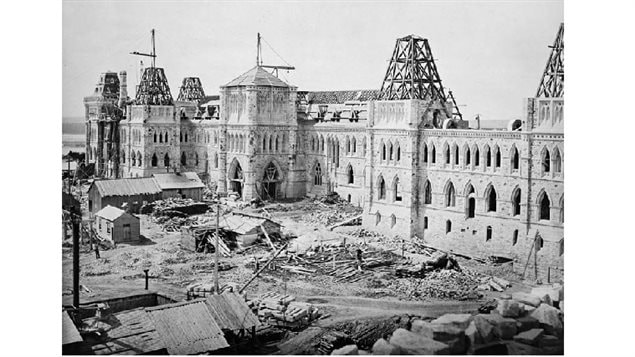
Late in the evening of February 3rd, 1916, as the First World War raged in Europe, smoke was seen escaping from the reading room of the Centre Block.
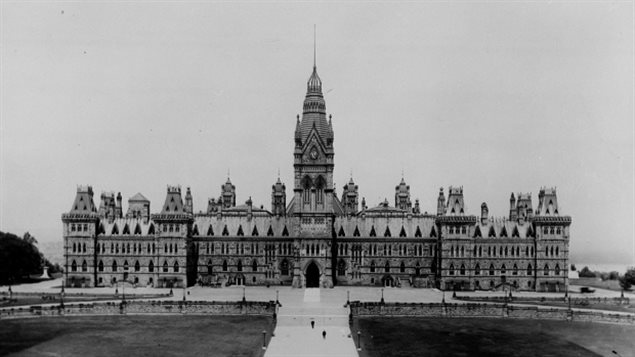
Fueled by papers and books in the reading room and the vast amount of varnished hardwoods and oiled pine throughout the building, the fire spread quickly and by 21:30 the roof collapsed, and in the early hours of February 4th, the Victoria clock tower collapsed.
The House was still sitting that evening debating compensation for fisherman and their families. The rush was on to get out, but seven people died in the blaze.
By the next day, the fire was out, but the structure was a smouldering icy shell.
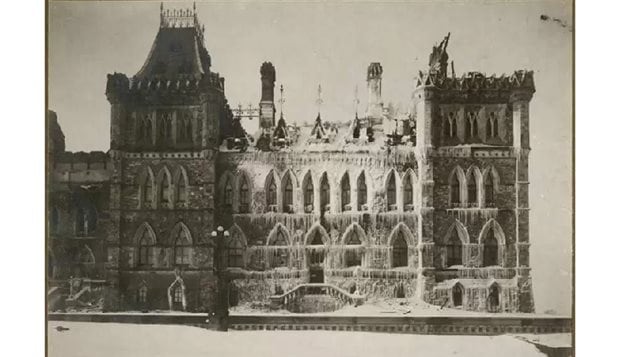
With the war raging, the fire was widely rumoured to be an attack by German saboteurs, and indeed a later inquiry suggested there was a “strong suspicion” of sabotage but left it at that.
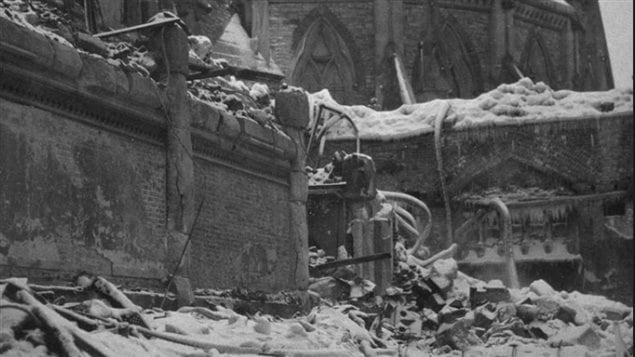
Another possibility was that it began with a carelessly discarded cigar or embers. Another theory (somewhat less plausible) is an electrical fire as the reading room had only recently been wired for electric reading lamps. Of note is that the Germans had a “secretive” chemical incendiary device at the time which was about the size of cigar and which could be timed.
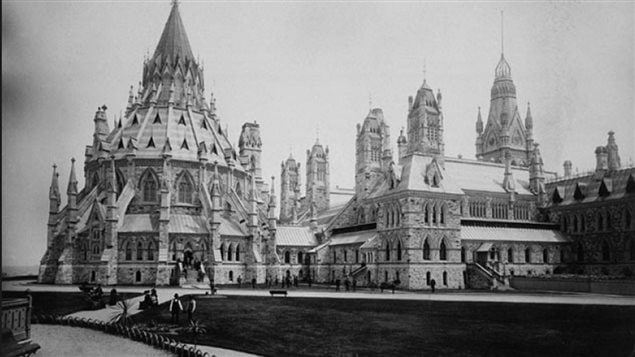
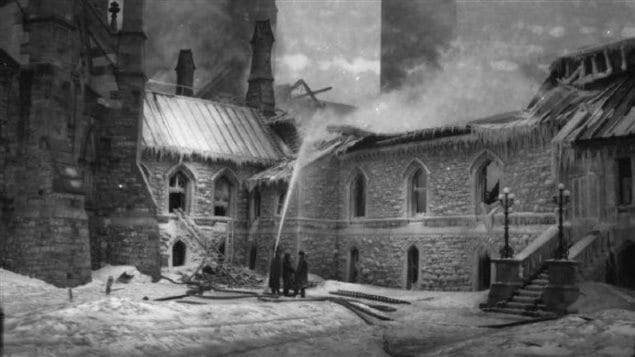
It is interesting that a similar fire in a pile of papers, also in the reading room, was put out just two days earlier. On that occasion, the people present pulled the papers out from under a desk and stomped out the flames with their feet.
On the evening of the third however, rather than immediately isolate the burning shelf of papers, a fire extinguisher was sought at the end of the hallway, the fire grew and when the extinguishers strong narrow stream hit the papers it broke them apart sending flaming bits of paper onto other papers in the room, and it was instantly too late.
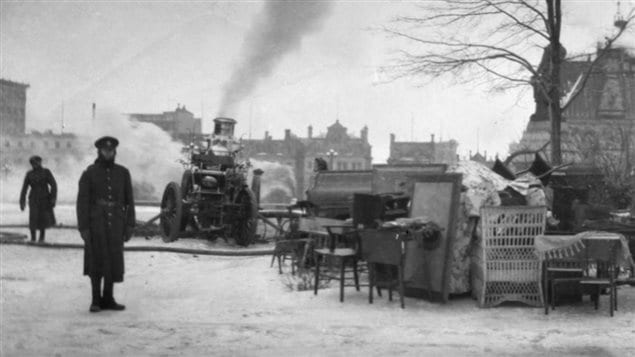
Begun in 1859 as the seat of government for the “Province of Canada”, the parliament buildings consist of three main structures, the Centre Block housing the House of Commons and Senate,offices and meeting rooms, and the separate East and West Blocks, also housing offices and meeting rooms.
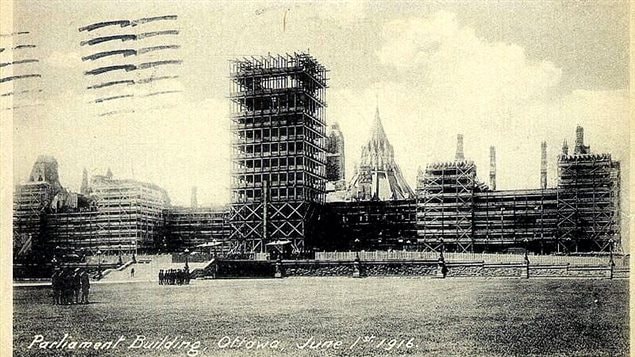
At the time it was begun, it was the largest construction project in all of North America. In 1861, cost overruns caused the unfinished site to be closed until 1863 following a commission of inquiry.
Although still incomplete, the buildings were ready for politicians to occupy just in time to celebrate Canadian confederation of the new “Dominion of Canada”, with the former united province of Canada, split into the provinces of Ontario and Quebec, along with the former British colonies of Nova Scotia, and New Brunswick. By 1876 the buildings were complete with the Victoria Tower as the central feature over the main entrance to the Centre Block.
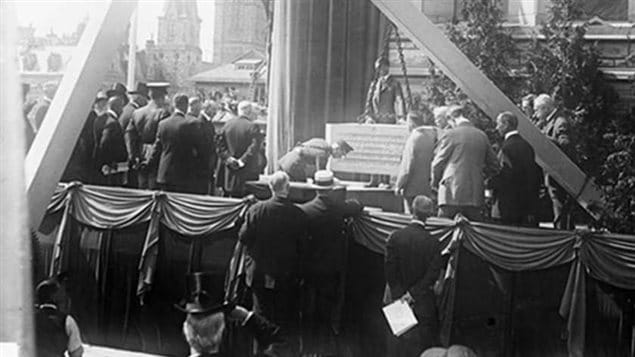
With the addition of other provinces into Confederation, many politicians and staff felt cramped, and although it was generally thought the stone shell was still solid, it was hastily decided by committee that it was unsafe, and had to be completely torn down and a new building created.

Rebuilding of the Centre Block was begun immediately but mostly in a similar arcihtectural style to the original. The first sitting in the “new” House of Commons was in 1920, with the building completed with the opening of the new tower in 1927. It now named the Peace Tower (officially the Tower of Victory and Peace) to honour the 1918 Allied victory, the armistice and the fallen of First World War. At 92 metres tall, it far exceeded the previous 55 metre Victoria Tower and contains a large 53-bell carillon and clock.

Detail and finishing work on the building would continue for the next several decades.
Since then restoration work goes on and upgrades take place on a regular basis.
Additional information- sources
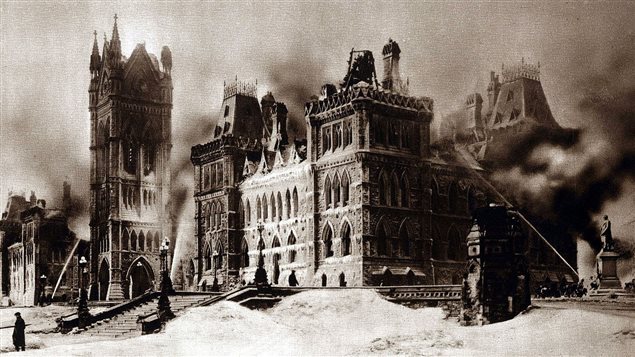






For reasons beyond our control, and for an undetermined period of time, our comment section is now closed. However, our social networks remain open to your contributions.